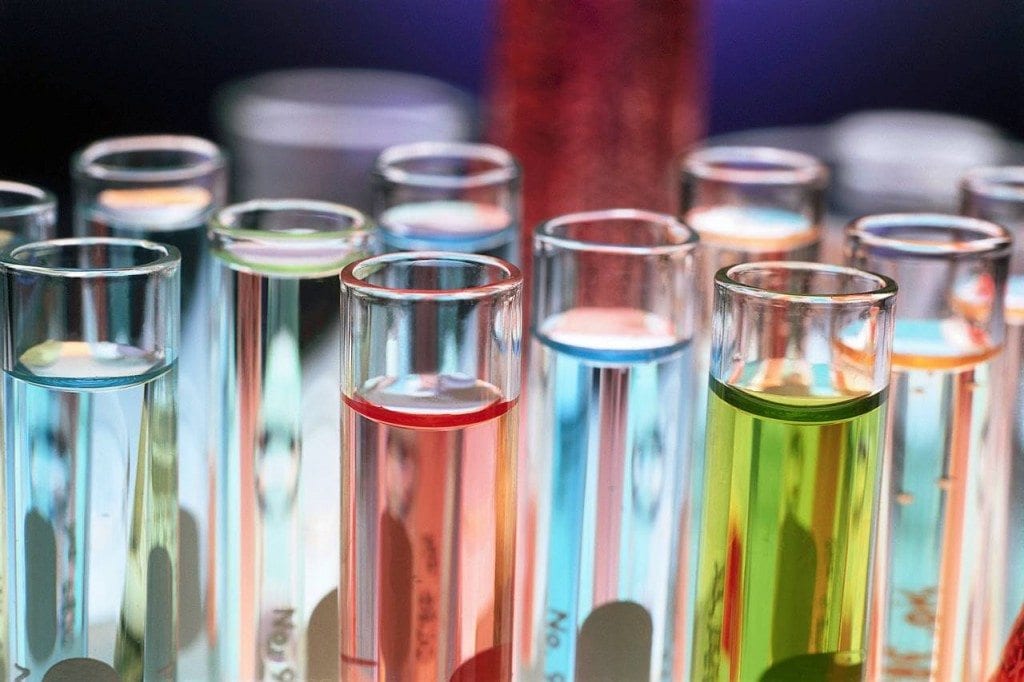5 Toxic Ingredients to Avoid in Cosmetics
It’s virtually impossible to dodge every single chemical throughout a lifetime, but we can make minor changes to limit the amount of toxins and chemicals that we put on our body by selecting products that are free of some of the most harmful chemicals that exist in beauty products.
If you’re thinking that skincare and cosmetic products that are applied to the skin do not get into your body in large amounts, think again! According to the EWG, “People are exposed to cosmetics ingredients in many ways: breathing in sprays and powders, swallowing chemicals on the lips or hands or absorbing them through the skin. Biomonitoring studies have found that cosmetics ingredients – such as phthalate plasticizers, paraben preservatives, the pesticide triclosan, synthetic musks and sunscreen ingredients – are common pollutants in the bodies of men, women and children.” the EWG writes on the Myths on Cosmetics safety page its skin-deep website.
When choosing products, we’re breaking down our top 5 ingredients that you want to be sure and avoid:
Phthalates
Phthalates (pronounced THA-lates) are plasticizing chemicals that are probable human reproductive or developmental toxins and endocrine disruptors. Phthalates cause reproductive birth defects in laboratory animals, particularly in males.
Phthalates are used in a large variety of products, from the coatings of pharmaceutical pills and nutritional supplements to viscosity control
agents, gelling agents, film formers, stabilizers, dispersants, lubricants, binders, emulsifying agents, and suspending agents.
Parabens
Parabens, defined as by Wikipedia “Parabens is a term used within the vernacular of the specialty chemicals industry to describe a series of parahydroxybenzoates or esters of parahydroxybenzoic acid. Parabens are widely used as preservatives by cosmetic and pharmaceutical industries.”
In the 1990s, parabens were deemed xenoestrogens―agents that mimic estrogen in the body. “Estrogen disruption” has been linked to breast cancer and reproductive issues.
Even though both parabens and pthalates are both considered safe by the FDA, we believe that there is enough concern about the harmful side effects (based on studies’ results) of these chemicals to stay away from all products which use them, especially pregnant women, babies and pubescent young adults. There are so many natural alternatives to these ingredients that there is just no reason to continue use of them within the marketplace.
Oxybenzone
Oxybenzone belongs to the class of aromatic ketones known as benzophenones. It provides broad-spectrum UV coverage, including UVB and short-wave UVA (ultraviolet) rays (found in sunscreens, lip gloss and moisturizers). Just like the findings of the Phalates, Oxybenzone has been shown to be a probable human reproductive or developmental toxins and endocrine disruptors.
Fragrance
According to The Breast Cancer Fund, synthetic fragrances used in cosmetics can have as many as 100 ingredients –including hormone-disrupting phthalates, synthetic musks, and ethylene oxide. ”Fragrance” is usually a chemical cocktail, often containing individual chemicals associated with allergic reactions and hormone disruption. Some fragrance chemicals have not been assessed for safety. Until all fragrance ingredients are disclosed on the label, consumers cannot know what is in a particular fragrance. Credit: Livestrong.com
PEG’s (Poly Ethylene Glycol)
PEGs (polyethylene glycols) are petroleum-based compounds that are widely used in cosmetics as thickeners, solvents, softeners, and moisture-carriers. PEGs are commonly used as cosmetic cream bases. They are also used in pharmaceuticals as laxatives. Dangerous levels of dioxin have been found as a by-product of the ethoxylstion process which has been linked to be a possible human carcinogen (aka cause cancer).


Leave a Reply
Want to join the discussion?Feel free to contribute!